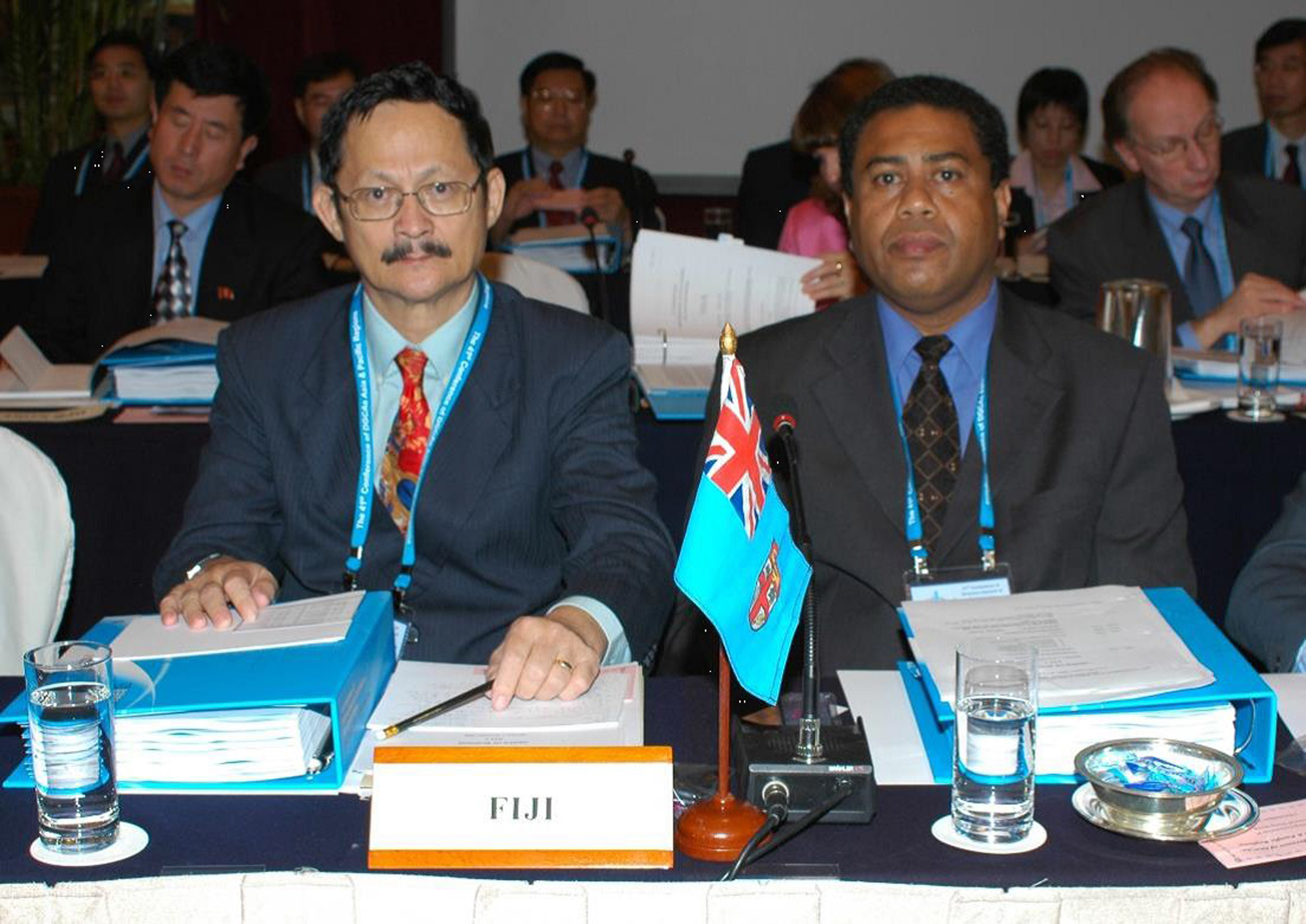IN the 1960s, remnants of World War II were still evident at the country’s main entry hub.
Nadi International Airport had become the main gateway to picturesque Fiji, with scores of locals and visitors commuting to and from its growing facilities.
In the midst of it all was the growing need to incorporate more locals in the workforce.
Expatriates continued to work at and manage the airport, however, the need for highly trained locals was becoming increasingly prevalent, especially with a potential Declaration of Independence not far off.
Managed by the then South Pacific Air Transport Council (SPATC), a collective of Allied Nations of which Fiji was a member, opportunities for training became available for those aspiring to work at the Nadi airport.
Joining the foray was Norman Yee, a fresh-faced 19-year-old who had just left high school in 1961.
Beginning as a trainee radio technician and capping off his career as the chief executive officer of the Civil Aviation Authority of Fiji (CAAF), Mr Yee has witnessed first-hand the challenges that came with the growth of the industry.
“After high school, I wanted to go overseas and this scholarship turned up offering five years training in Brisbane and at Nadi International Airport to maintain radio equipment,” the 77-year-old says.
“We were the first batch, about eight of us, we went for training but a couple of them didn’t make it. At that time, the New Zealanders, expatriates, were running the airport.”
Training began at the very basic level as these recruits were taught skills ranging from basic screwdriver work to managing equipment at transmitting stations and navigational aid sites.
Perhaps one of the biggest drivers of the team’s achievements was their tenacious nature for getting things done successfully.
Mr Yee says their ambition fuelled the desire to exceed in this field.
“Later on, more and more people got trained in Australia and then New Zealand.
“We started work in 1966 and by 1974, the Fiji Government decided to take over all the airports in Fiji. That included Nausori and Labasa airport.
“Nadi airport was run by this group called the South Pacific Air Transport Council (SPATC) of Australia, New Zealand, UK and Fiji was one of the members so they started this training program.”
It was in 1974 that Mr Yee volunteered to be stationed at Nausori airport for six months and he was accompanied by his wife and children.
The six months developed into 12 and by then, he was eager to resume work back at Nadi airport. During his time at Nausori airport, he also managed to train and work with other locals and gained a greater insight into the behind-the-scene operations of an airport.
He went home as the Department of Civil Aviation was formed, headed by expatriate Mike Varley. Mr Yee recalls that Mr Varley was appointed to oversee the localisation of Nadi airport and had prior experience in aviation through the International Civil Aviation Organisation (ICAO).
It was at this time that Mr Yee was sent on a six-month study trip to Australia. Upon his return, he was appointed the chief technical officer of the department.
For about four years, Mr Varley worked in tandem with top locals to ensure the department gained the necessary skills and expertise, allowing SPATC to slowly dissolve. In 1979, CAAF was established.
Mr Yee remembers CAAF as the first organisation of its type in Asia and the Pacific.
“Mr Varley trained us locals and created CAAF. He was the one who wrote the laws. He did a great job and so we started to fill in the posts and then, after a while he trained the first local executive, Jone Koroitamana.”
Then, there was a big changeover in the late 1990s when the Government decided to split CAAF into different companies.
“Fiji Airports (then Airports Fiji Ltd), Strategic Air Services Ltd, an air traffic company and CAAF and so at that time, Jone retired and I became acting in the position. It was a very difficult time but we managed.
“After that when the reformation took place on April 12, 1999, CAAF became a regulator, a small organisation regulating the activities of airlines, pilots, engineers and AFL.
“AFL took over the operational side and the commercial side such as the duty free shops, runways and everything, and the staff company SASL ran air traffic control but this was later absorbed by AFL.
“They asked me to shift over to help AFL because they needed some experienced people so I was there for about nine months and then I came back to CAAF. I retired in 2007 as chief executive adviser after we picked a replacement, Netava Waqa.”
Next week: Read more about how communicators trained and the skills they learnt in order to join the aviation field



